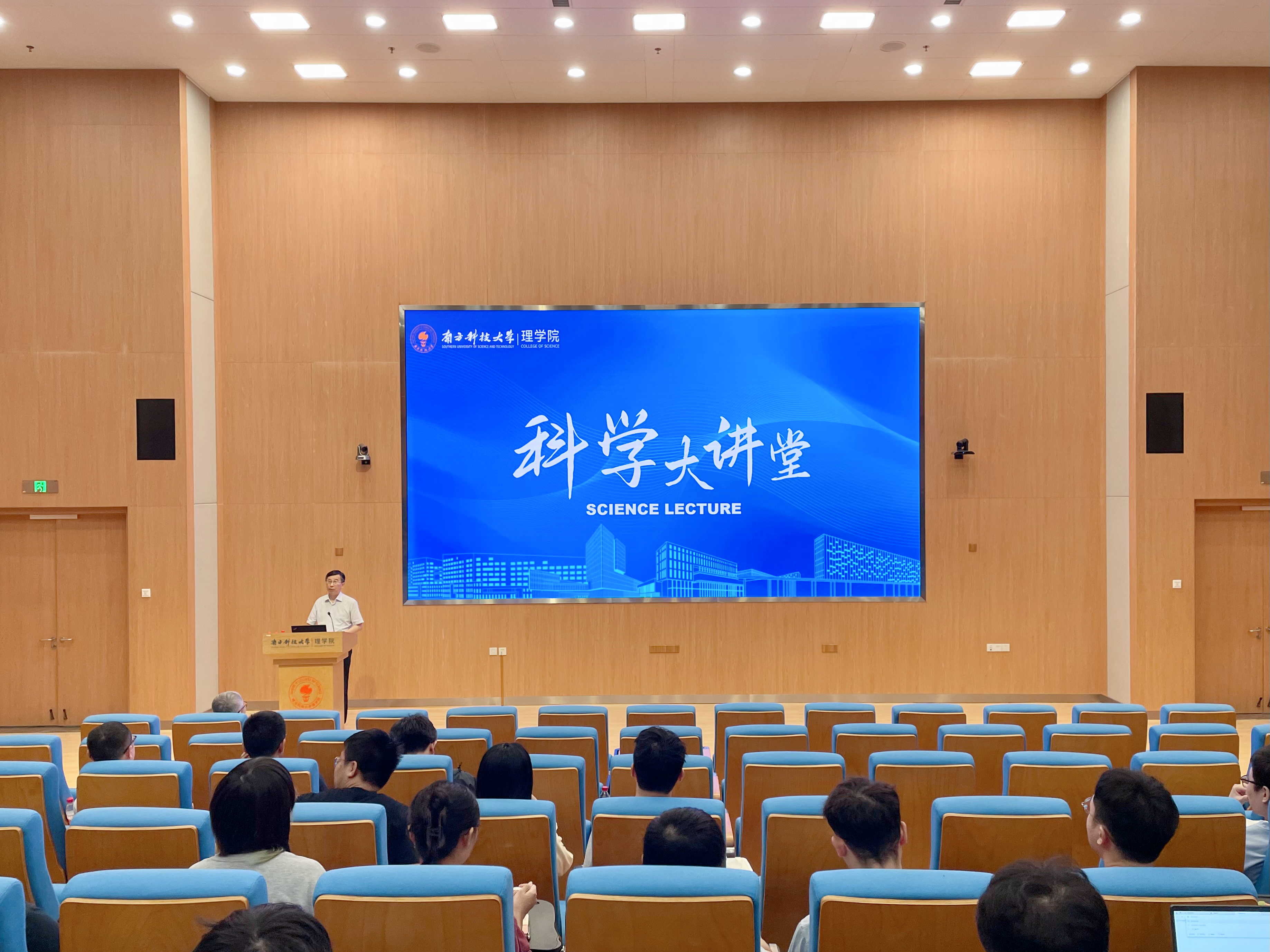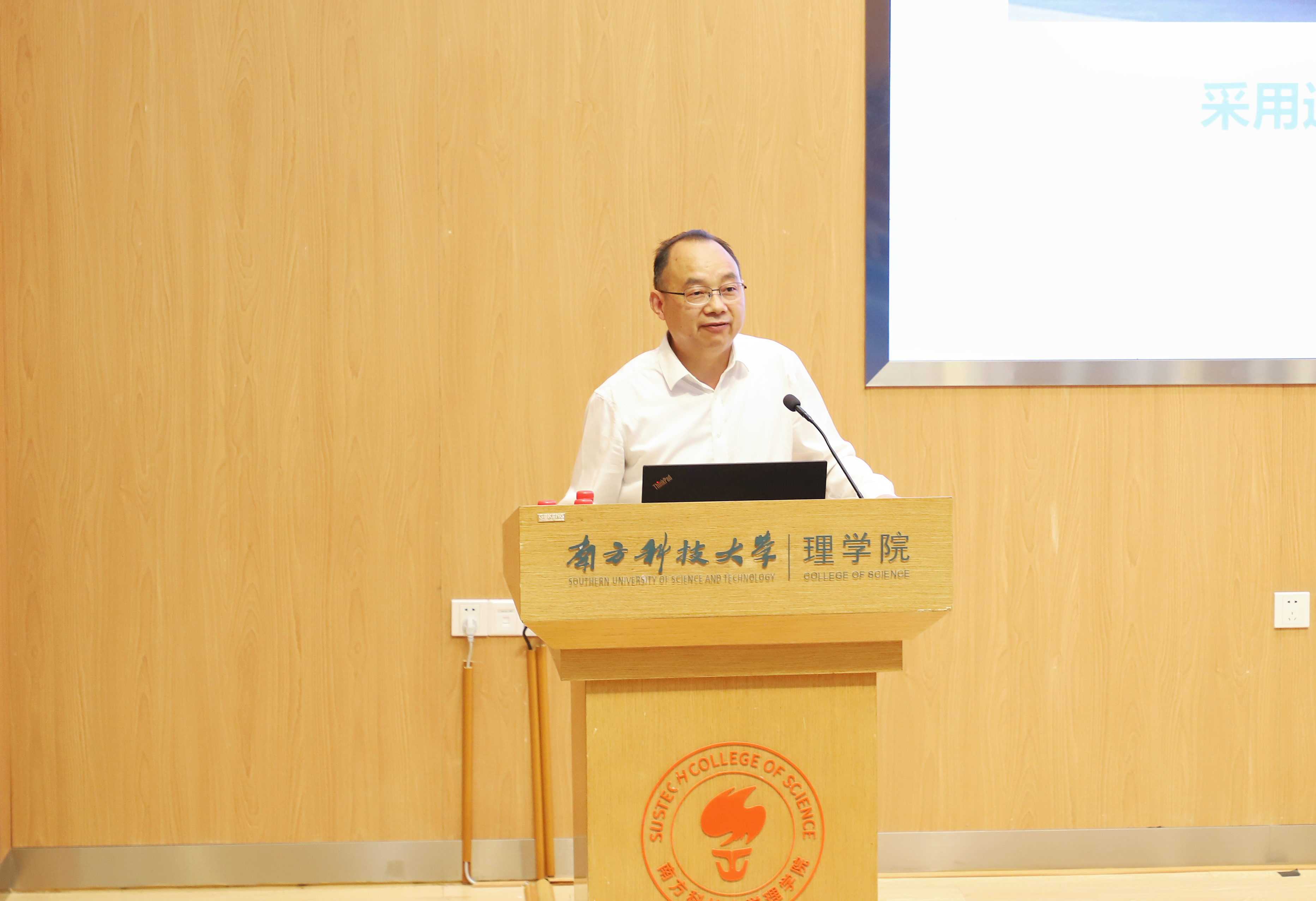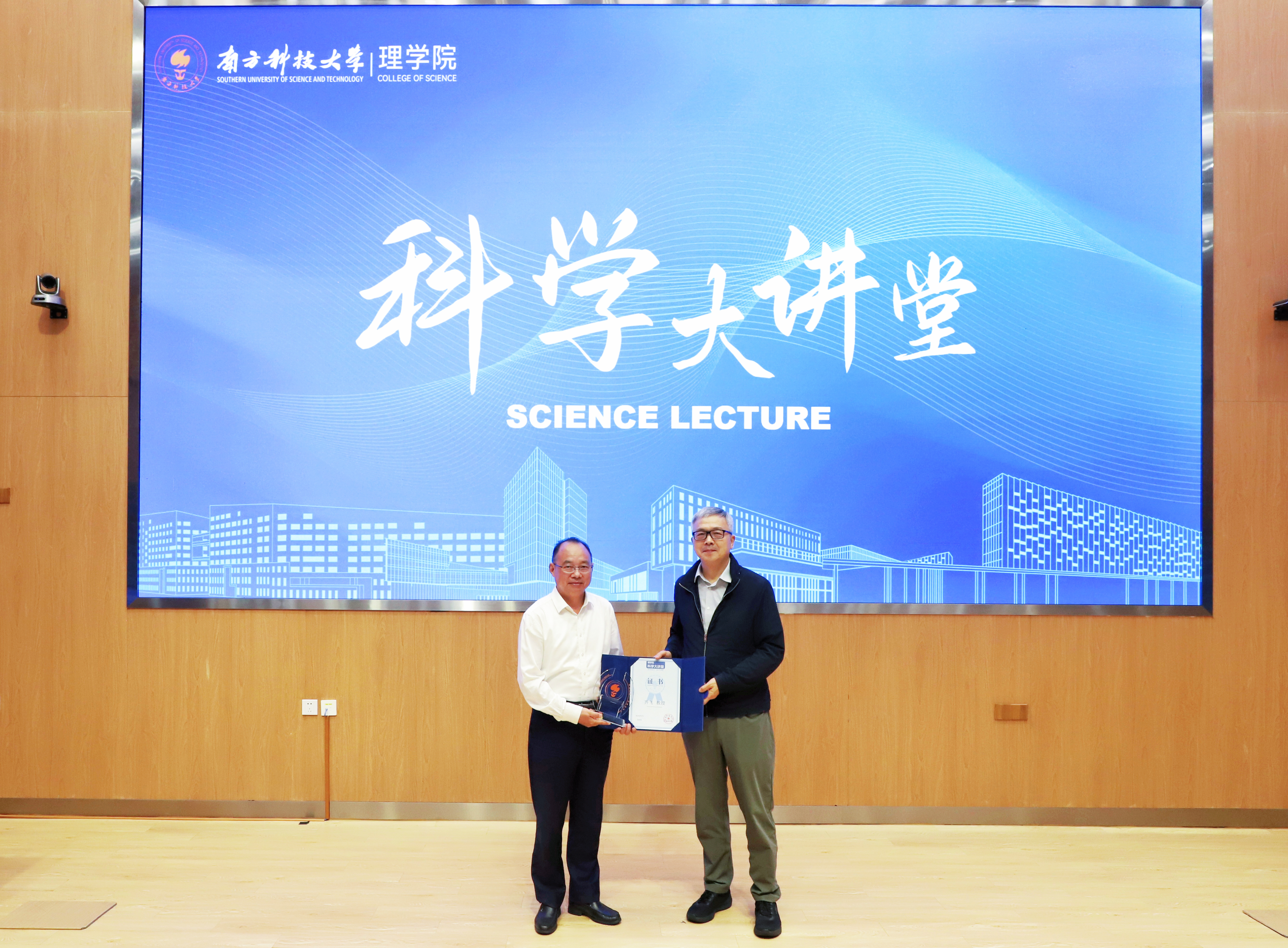Professor Fei QI talks about Physical Chemistry in Flame
2024-05-23
On May 21, 2024, Prof. Fei QI from Shanghai Jiao Tong University was invited to the 153rd Science Lecture in the College of Science, SUSTech. He gave a lecture themed “Physical Chemistry in Flame”. In attendance were Xueming YANG, Vice President, Shu-Hong YU, Dean of the College of Science, and over 100 faculty members and students.

Prof. QI started with popular science videos on flames and extended to discuss the types of flames, delving into the reaction kinetics processes that occur within flames. The complexity of the combustion process lies in converting the chemical energy in the fuel into heat energy and releasing it, involving numerous interactions of physical and chemical reactions. In the lecture, Prof. QI particularly emphasized the importance of combustion measurement methods, including both direct contact and non-contact measurement methods, providing the audience with a comprehensive understanding of combustion diagnostic methods.

Mass spectrometry combustion diagnostics technology was a key focus of the lecture, where Prof. QI introduced two main methods in mass spectrometry diagnostics: photoionization and electron impact ionization, with a special emphasis on the importance of photoionization due to its selective ionization product features. Through practical examples, Prof. QI shared insights on how to use vacuum ultraviolet photoionization mass spectrometry technology combined with ion trap technology and ultrasonic molecular beam sampling to conduct in-depth research on fuel pyrolysis, oxidation, and flames.
Prof. QI's research not only advances the establishment of combustion reaction kinetics models but also provides valuable data and theoretical support for the design of aircraft engines and the development of the combustion industry. In the lecture, Prof. QI pointed out the importance and challenges of designing a high-precision, spatiotemporal resolved multi-field synchronous measurement method. Regarding this topic, he proposed a novel flame diagnostic method based on laser and imaging to achieve synchronous measurements of flame 3D, t-3D flow field, temperature, and component. This approach holds significant potential value in enhancing combustion efficiency and stability.
During the interactive Q&A session, the teachers and students on site enthusiastically asked questions about the physical and chemical aspects of flames, and Prof. QI answered each question in detail.
Q: How can combustion models be developed and studied from an experimental perspective?
A: In theoretical research, it is important to first understand the corresponding experimental setup and variables. Modeling experimental data based on experimental requirements allows for a more gentle comparison with experimental data.
Q: Can combustion research be used to deduce the requirements and characteristics of materials in combustion chambers to find better materials for aircraft engines?
A: For researchers in combustion studies, the ability to achieve smooth combustion is more crucial for aircraft engines. Smooth combustion significantly reduces the demands on combustion chamber materials, allowing for smoother operation of aircraft engines.
In conclusion, Academician Xueming YANG handed an honorary certificate to Prof. Fei QI.





